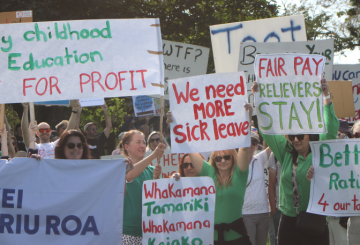오늘날과 같이 빠르게 변화하는 세상에서는 환경 친화적이 되기가 어려울 수 있습니다.하지만 웨스턴 베이 오브 플렌티 지구 협의회의 팀은 작은 변화라도 큰 변화를 가져올 수 있다고 믿습니다.
시의회는 사람들이 환경에 미치는 영향을 줄이고 기후에 더 잘 적응할 수 있는 지역사회를 만들기 위한 노력의 일환으로 에너지를 절약하도록 장려하고 있습니다.이들은 작년에 FutureFit과 파트너십을 맺었습니다. FutureFit은 사람들이 지구에 미치는 영향을 이해하고 기후 친화적 목표를 설정하도록 돕는 도구입니다.
간단한 제안 중 하나는 에어컨이 켜져 있는 동안 창문과 커튼을 닫는 것입니다.이렇게 하면 여름에 집을 더 시원하게 유지하고, 에어컨 효율을 높이고, 전기 요금을 줄일 수 있습니다.
좀 더 친환경적인 습관을 들이고자 한다면 다음과 같은 몇 가지 간단한 팁을 알려드리겠습니다.
– 자동차를 자전거로 바꾸고 웨스턴 베이 주변의 멋진 사이클링 명소를 둘러보세요.
– 일회용 접시와 컵은 사용하지 마세요.대신 친구나 가족에게 여분을 가져오라고 부탁하세요.
– 여행 전에 차에서 불필요한 무게를 줄이고 타이어 압력을 확인하세요.이를 통해 상당한 양의 연료를 절약할 수 있습니다.
– 특히 한 번만 사용할 경우에는 아이템을 구매하는 대신 대여하세요.
– 현지에서 구입하여 제품 운송에 사용되는 CO2를 줄이세요.
– 새 물건 대신 중고 물품을 사는 것을 고려해 보세요.
– 쇼핑할 때는 항상 가방을 챙기세요.
– 여러 번의 여행을 피하고 시간을 절약하기 위해 심부름할 일을 계획하세요.
– 자주 사용하는 카페에 재사용 가능한 컵을 가져가세요.
시의회는 또한 지역사회가 기후 회복력을 구축하고 기후 변화의 영향을 줄이기 위한 계획을 세우는 데 참여하도록 장려합니다.위원회의 피드백 페이지를 확인하고 FutureFit 도구를 사용하여 개인이 환경에 미치는 영향을 이해할 수 있습니다.5분 분량의 온라인 퀴즈를 풀고 오늘 취할 수 있는 다른 조치가 무엇인지 확인해 보세요.





























































